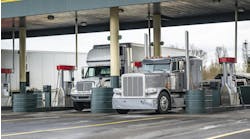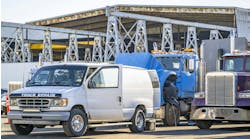Akin: Fuel card fees are draining your budget—here’s how to stop them
Fuel cards and fleet cards are essential for fleet management, but hidden fees can quietly drain your budget. Spotting these fees and taking action can save thousands in unnecessary costs. Furthermore, choosing the right fuel card solution can be game-changing for your fleet business and economics.
Common hidden fees draining your budget
Hidden fees are buried in invoices under vague terms like "program admin fee" or "miscellaneous charges." These are often costly for fleets and add up very quickly. Watch out for the following:
- Per-card fees: Up to $10 per card per month
- Overlimit fees: Up to $60 per instance
- Transaction fees: Up to $3 per purchase
- Reporting fees: Up to $25 per report
- Out-of-network fees: Up to $0.50 per gallon
- ACH payment fees: Up to $30 per transaction
The cost of hidden fees
What seems like a minor expense can quickly become a major drain on a fleet's budget. A fleet that completes 1,000 transactions per month at $3 per transaction loses $3,000 just in transaction fees. For a light-duty fleet, this is 15 cents extra per gallon that you are paying. Similarly, buying 10,000 gallons of fuel monthly at an extra 50 cents per gallon adds $5,000 in unnecessary costs. Even something as simple as maintaining 200 fuel cards at $10 each results in an avoidable monthly charge of $2,000. Over time, these fees become huge burdens on businesses.
See also: Roeth: Cut costs by saving fuel
How to uncover hidden fees
Detecting hidden fees requires close scrutiny of invoices. Fleet managers, business owners, and accountants should analyze line items carefully, searching for ambiguous terms like "admin fees" or "transaction charges." Comparing invoices across months helps identify patterns of recurring fees that may have gone unnoticed. Conducting regular audits can also reveal unexpected costs and help fleet managers take action before they add up.
A delivery fleet that used 12,000 gallons per month outside of its network incurred an extra $0.50 per gallon in hidden fees. The result was an additional cost of $6,000 each month, or over $72,000 annually. By switching to a broader network with lower fees, the fleet could have significantly reduced these unnecessary expenses.
Strategies to cut hidden fees
Reducing hidden fees starts with choosing the right fuel card provider. Fleet managers should prioritize transparency by selecting modern fuel risk management platforms, which offer straightforward pricing with no surprise charges. Expanding network coverage helps minimize costly out-of-network purchases. Setting spending limits prevents overlimit fees, while AI-driven analytics can identify inefficiencies before they escalate. Additionally, negotiating contract terms up front ensures that all potential fees are disclosed, helping fleets avoid unexpected costs.
The bottom line
Hidden fees can silently sabotage fleet profitability, but they don’t have to. By closely monitoring invoices, leveraging modern technology, and choosing transparent providers like RoadFlex, fleet managers can take control of expenses and keep operations running efficiently. More modern fuel risk management solutions tend to have transparent fee structures that avoid any unnecessary hidden charges and provide top-notch customer support and service for their partners.




